Add Vibrant Fall Color to Your Garden with the Best Perennials, Shrubs, and Trees
Fall is a magical time of year when the air turns crisp, and gardens come alive with a rich tapestry of colors. While spring and summer gardens are known for their bright blooms, fall offers its own palette of vibrant reds, oranges, purples, and yellows. Adding the right perennials, shrubs, and trees to your landscape can create stunning displays that last well into the cooler months. At D.R. Snell Nursery, we have a wide selection of plants that will bring beauty and interest to your garden long after summer has passed.
Perennials for Fall Color
Perennials are a fantastic choice for adding fall color to your garden. These plants return year after year, making them a long-lasting investment. Here are some of the best perennials to add vibrant hues to your fall garden:
1. Asters
Asters are classic fall-blooming perennials that produce daisy-like flowers in shades of purple, pink, and white. These cheerful blooms thrive in full sun and provide a late-season nectar source for pollinators, especially bees and butterflies.
2. Sedum ‘Autumn Joy’
Sedum, commonly known as Stonecrop, is a hardy perennial that adds both texture and color to fall gardens. ‘Autumn Joy’ is a popular variety that features clusters of star-shaped flowers that start pink and deepen to a rich copper-red as the season progresses. It also attracts bees and butterflies, making it a great choice for wildlife-friendly gardens.
3. Heuchera (Coral Bells)
Heucheras are known for their striking foliage, which comes in an array of colors like burgundy, bronze, and chartreuse. These shade-tolerant plants are perfect for adding vibrant leaf color to garden beds and borders. Many varieties even hold their leaves through the winter, providing year-round interest.
4. Echinacea (Coneflower)
While Echinacea is often associated with summer, many varieties continue to bloom well into the fall. Their bright, daisy-like flowers in shades of pink, purple, and orange add cheerful color to garden beds. Coneflowers also produce seed heads that attract birds, providing food for wildlife throughout the fall and winter.
Shrubs for Fall Color and Berries
Shrubs are an essential part of any fall landscape because they provide structure, seasonal interest, and, in many cases, berries that attract birds and wildlife. Here are some of the best shrubs for fall color and fruit:
1. Burning Bush (Euonymus alatus)
True to its name, the Burning Bush turns a brilliant scarlet-red in the fall, making it one of the most striking shrubs for autumn landscapes. Its fiery foliage creates a stunning contrast to the cooler fall weather. Burning Bush is low maintenance and grows well in both sun and part shade.
2. Beautyberry (Callicarpa americana)
Beautyberry is a standout shrub in the fall garden due to its clusters of vibrant, purple berries that appear along the stems in late summer and early fall. The berries provide food for birds and last well into the colder months, adding a pop of color to the winter garden.
3. Winterberry (Ilex verticillata)
Winterberry is a deciduous holly that produces bright red berries in the fall. The berries persist throughout the winter, making it a valuable food source for birds. Winterberry thrives in wet soils, making it an excellent choice for rain gardens or low-lying areas of your landscape.
4. Oakleaf Hydrangea (Hydrangea quercifolia)
Oakleaf Hydrangea offers a spectacular fall show with its large, oak-shaped leaves that turn shades of deep red, purple, and orange as the temperatures drop. The shrub also produces long-lasting, cone-shaped flower clusters that fade from white to pink.
Trees for Fall Foliage
Adding trees to your landscape can provide a dramatic backdrop of fall color that will transform your garden into a seasonal masterpiece. Here are some of the best trees for fall foliage:
1. Red Maple (Acer rubrum)
Known for its fiery red foliage, the Red Maple is one of the most popular trees for fall color. This fast-growing tree can reach impressive heights and provides a brilliant display of red, orange, and yellow leaves in the fall.
2. Sugar Maple (Acer saccharum)
The Sugar Maple is famous for its vibrant autumn color, ranging from golden yellow to deep orange and red. In addition to its beauty, the Sugar Maple is also the source of maple syrup, adding a practical element to its ornamental value.
3. Dogwood (Cornus florida)
In the fall, Dogwoods offer a breathtaking display of red foliage and clusters of red berries. These small, ornamental trees are perfect for adding fall interest to smaller spaces or as an understory tree in larger landscapes.
4. Sweetgum (Liquidambar styraciflua)
Sweetgum trees offer a unique display of star-shaped leaves that turn shades of purple, red, and orange in the fall. Their spiky seed pods add an interesting texture to the garden, even after the leaves have fallen.
With the right selection of perennials, shrubs, and trees, you can create a stunning fall landscape that will keep your garden looking beautiful well into the cooler months. Visit D.R. Snell Nursery today to explore our wide selection of plants and find the perfect additions for your fall garden!
 Whether you’re an avid gardener or just starting out, one of the best ways to improve your outdoor space this year is simple: spend five mindful minutes in your garden every day, paired with your favorite beverage and a notebook.
Whether you’re an avid gardener or just starting out, one of the best ways to improve your outdoor space this year is simple: spend five mindful minutes in your garden every day, paired with your favorite beverage and a notebook. listen to the birds, and take in the sights of dew-kissed leaves.
listen to the birds, and take in the sights of dew-kissed leaves. phone to jot down quick notes. Here are a few things to track:
phone to jot down quick notes. Here are a few things to track: inspired. And when you look back at your notes, you’ll see the evolution of your garden—and yourself as a gardener.
inspired. And when you look back at your notes, you’ll see the evolution of your garden—and yourself as a gardener.







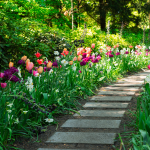

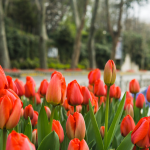

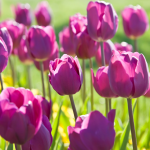
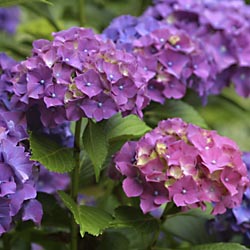
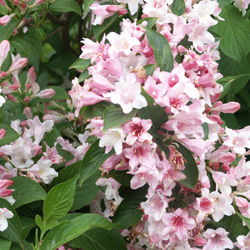 also invite hummingbirds and butterflies to your garden. Its graceful arching branches make Weigela perfect for adding structure and dimension to your landscape.
also invite hummingbirds and butterflies to your garden. Its graceful arching branches make Weigela perfect for adding structure and dimension to your landscape.
